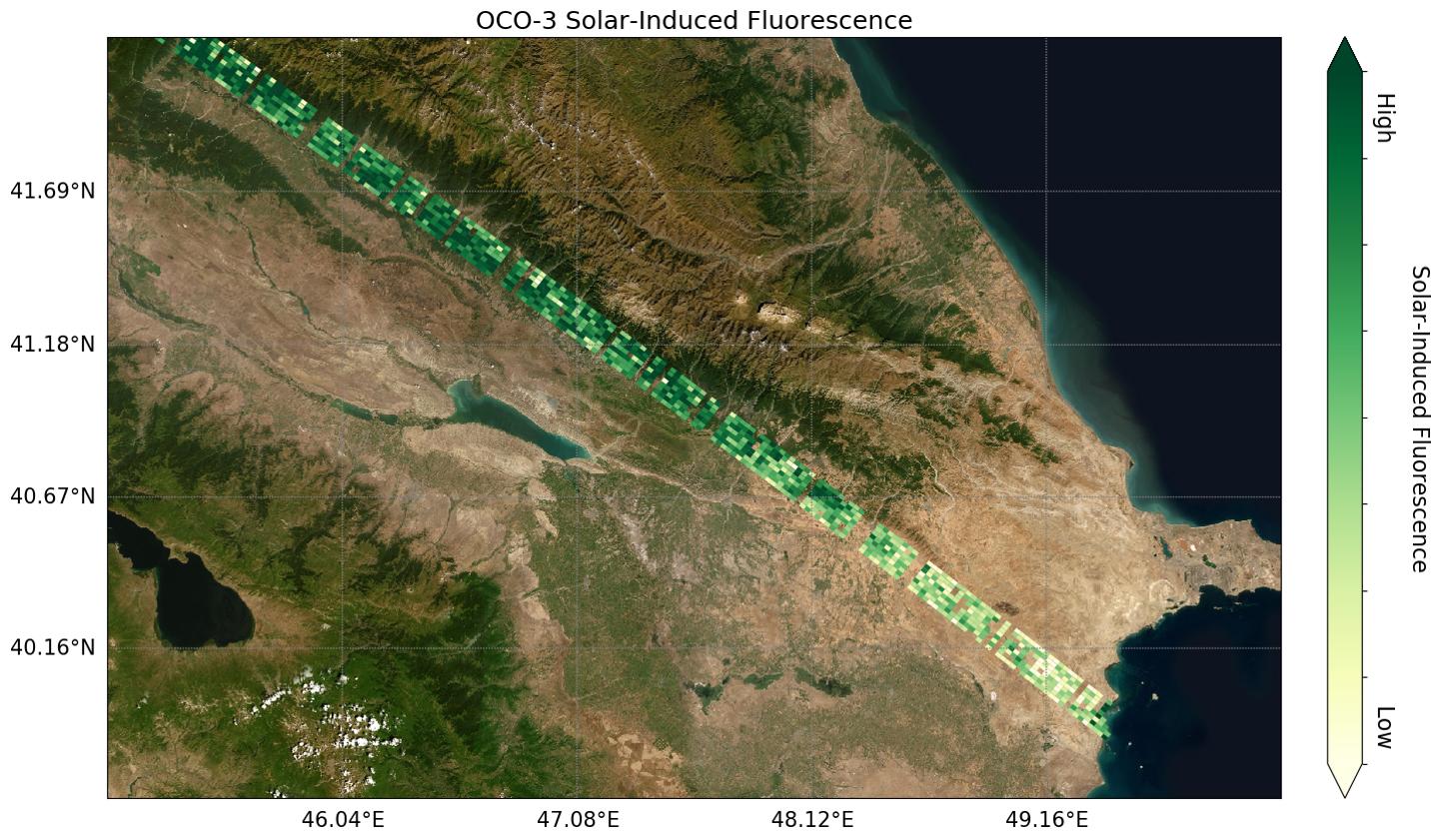Projects
OCO-3

Background
NASA's Orbiting Carbon Observatory-3 (OCO-3) OCO-3 measures atmospheric carbon dioxide from space. It achieves this through the use of three high-resolution spectrometers integrated into a common structure with a single telescope. Two of the spectrometers measure the amount of sunlight absorbed by carbon dioxide at different wavelengths, and the third measures sunlight absorbed by oxygen. The ratio of carbon dioxide to oxygen is used to determine the concentration of atmospheric carbon dioxide. As well as carbon dioxide, OCO-3 can measure a type of radiation from plants called solar-induced fluorescence (SIF). This radiation is only emitted during photosynthesis, giving scientists an insight to plant health and productivity. The below images show a sample of carbon dioxide and SIF measurements taken by OCO-3.

Problem
OCO-3 is able to take measurements in four observational modes:- Nadir - taken directly below the spacecraft over land
- Glint - taken over the ocean near the glint spot to maximize the signal received by the detectors
- Target - repeated scans taken over a point of interest, such as a calibration site
- Snapshot Area Map (SAM) - neighboring scans taken over a region of interest, such as a city
Impact
The OCO-3 scheduler was used to schedule calibration campaigns during In-Orbit Checkout from May 2019 - August 2019 and has been used to schedule observations for nominal operations since August 2019.Status
OCO-3 launched on May 4, 2019 to the ISS (International Space Station) on a Space-X Falcon 9 rocket as part of a resupply mission. The instrument is attached to the Japanese Experiment Module-Exposed Facility (JEM-EF) on the ISS. From the orbit of the International Space Station, the OCO-3 instrument can see target regions at varying times throughout the day, rather than more common sun synchronous satellites which see the same target always at a fixed time of day. This variability in overflight timing allows scientists to study how atmospheric carbon changes throughout the day, as well as how it changes over longer timescales such as seasons and years.The OCO-3 scheduler has been used for operations of OCO-3 starting during instrument checkout and continues presently.
Publications
Team
Amruta YelamanchiliChristopher Wells
Joseph Russino
Steve Chien
Annmarie Eldering
Ryan Pavlick
Cecilia Cheng
Robert Schneider
